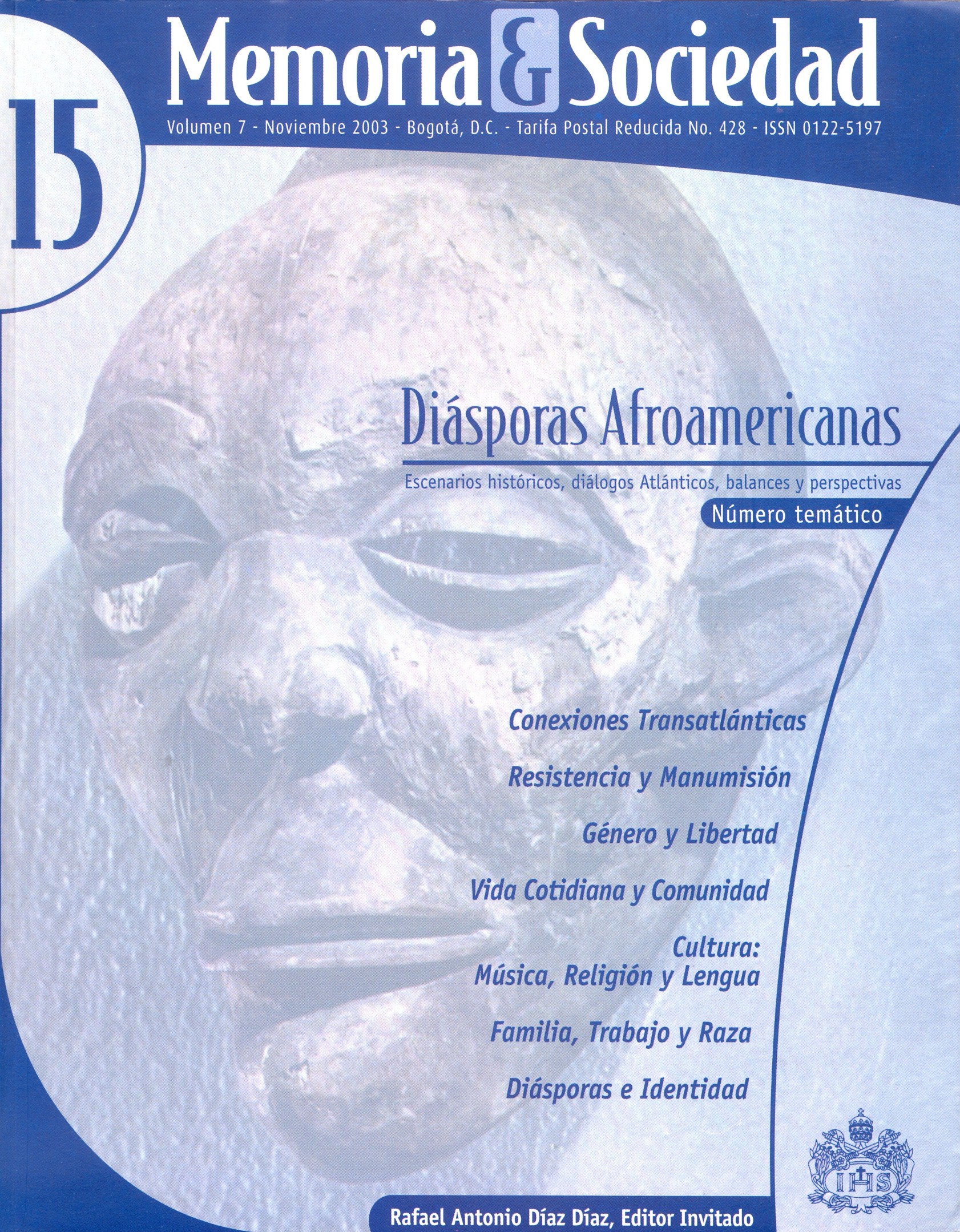Resumen
Brujas que roban el alma al abrazar, concilios de negros y mulatos, danzas secretas, danzas de negros durante festivales religiosos y juegos de todo tipo, tambores prohibidos, demonios, comunidades de esclavos fugitivos, fiestas de mulatos, mulatos vestidos como mujeres, instrumentos de canto. Estas son unas de las manifestaciones culturales de las poblaciones negra y mulata en el Reino de la Nueva Granada. Sin embargo, ellos comparten con otros sectores sociales (nativos americanos, españoles y mestizos) su propio proceso de construcción de una amplia matriz de cultural coloniales, ensombrecida por los espacios regionales y por sus propias dinámicas históricas, demográficas y sociales. Este artículo toma como eje principal de investigación el análisis de la construcción de algo que en primera instancia llamaré cultura negra y mulata. Para lograr este objetivo el ensayo estará definido por la teoría de la cultura colonial. Posteriormente, me concentraré en el campo de las etapas transatlánticas como una escena fluida para la Diáspora africana y trataré de recuperar la dimensión africana de ésta.La revista Memoria y Sociedad se encuentra registrada bajo la licencia Creative Commons Reconocimiento 4.0 Internacional. Por lo tanto, esta obra se puede reproducir, distribuir y comunicar públicamente en formato digital, siempre que se reconozca el nombre de los autores y a la Pontificia Universidad Javeriana. Se permite citar, adaptar, transformar, autoarchivar, republicar y crear a partir del material, para cualquier finalidad (incluso comercial), siempre que se reconozca adecuadamente la autoría, se proporcione un enlace a la obra original y se indique si se han realizado cambios. La Pontificia Universidad Javeriana no retiene los derechos sobre las obras publicadas y los contenidos son responsabilidad exclusiva de los autores, quienes conservan sus derechos morales, intelectuales, de privacidad y publicidad.
El aval sobre la intervención de la obra (revisión, corrección de estilo, traducción, diagramación) y su posterior divulgación se otorga mediante una licencia de uso y no a través de una cesión de derechos, lo que representa que la revista y la Pontificia Universidad Javeriana se eximen de cualquier responsabilidad que se pueda derivar de una mala práctica ética por parte de los autores. En consecuencia de la protección brindada por la licencia de uso, la revista no se encuentra en la obligación de publicar retractaciones o modificar la información ya publicada, a no ser que la errata surja del proceso de gestión editorial. La publicación de contenidos en esta revista no representa regalías para los contribuyentes.


